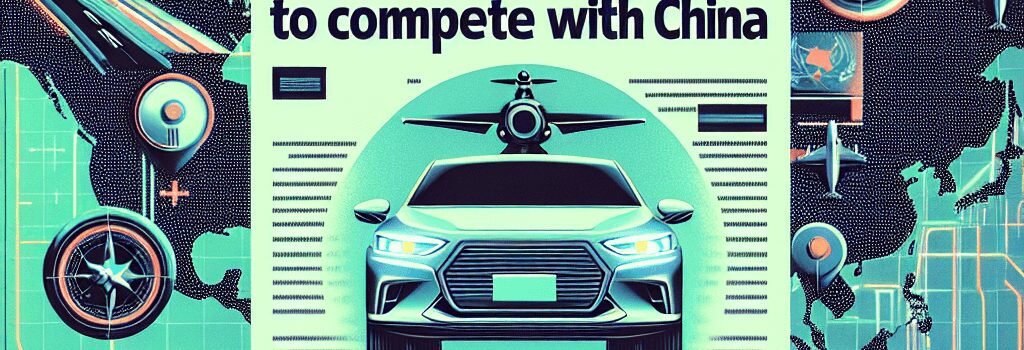U.S. DOT Eases AV Regulations to Compete with China

On April 25, 2025, the U.S. Department of Transportation (DOT) unveiled a significant revision to its regulatory framework for autonomous and partially automated vehicles (AVs). Acknowledging the strategic imperative to outpace China in next-generation mobility, Secretary Sean Duffy emphasized that the new rules will reduce bureaucratic hurdles while maintaining stringent safety reporting requirements.
Regulatory Overhaul: Key Changes
- FMVSS Exemptions for Domestic OEMs – U.S. carmakers and AV startups may now apply for temporary waivers from Federal Motor Vehicle Safety Standards (FMVSS) on rearview mirrors, steering wheels and other legacy hardware through an iterative safety assessment.
- Crash Reporting Remains Intact – Under NHTSA’s Standing General Order, any crash involving SAE Level 2–5 systems that leads to a fatality, hospitalization, airbag deployment or towing must be reported within 10 days. Lower-severity incidents with property damage above $2,000 or involving vulnerable road users require notification in 15 days.
- Single National Standard Initiative – The framework paves the way for a unified federal regime, replacing a patchwork of state-level AV laws and integrating best practices from international regulations such as UNECE R155 (cybersecurity) and R156 (over-the-air software updates).
Technical Implications and Safety Protocols
The exemption process emphasizes a safety-case approach aligned with ISO 26262 and UL 4600 functional safety standards. Domestic developers can now prototype Level 4 robotaxis equipped solely with surround-view LiDAR, radar and high-resolution cameras, driving real-time sensor fusion at up to 1,200 Hz. Many platforms leverage NVIDIA Drive Orin or Qualcomm Snapdragon Ride for onboard inference, while 5G C-V2X modules enable low-latency vehicle-to-infrastructure communication.
Manufacturers must submit detailed cybersecurity risk assessments, demonstrating compliance with NHTSA’s new Security by Design guidelines. Redundant braking, steer-by-wire architectures and remote supervisory teleoperation channels are strongly encouraged. OTA (over-the-air) update protocols will follow the Federal Register’s draft requirements to ensure secure cryptographic signing and rollback protection.
Impact on Domestic AV Industry and Competitiveness
With China’s Baidu Apollo and Pony.ai aggressively testing in Beijing and Guangzhou, U.S. incumbents such as Waymo, Cruise, Aurora and Motional are under pressure to scale their Phoenix, San Francisco and Austin fleets. The revised DOT rule dovetails with federal incentives under the CHIPS and Science Act—directing $3 billion toward AI accelerators and edge-computing nodes—and SBIR grants for advanced perception software.
Startups like May Mobility and TuSimple, often hamstrung by FMVSS waiver backlogs, can now accelerate field trials on mixed-traffic corridors. General Motors, Ford and Honda have joined forces with tech partners in dedicated AV hubs, aiming to deploy Level 4 robo-shuttles in select American metros by 2026. Industry forecasts predict over 100,000 robotaxis on U.S. roads by 2030, generating an estimated $50 billion annual market.
Expert Opinions and Industry Reactions
“Balancing innovation speed with robust safety assurance is vital,” notes Dr. Elena Rodriguez, a senior research scientist at Carnegie Mellon’s Robotics Institute. “These revisions enable dynamic testing of transformational architectures—like steer-by-wire—while preserving NHTSA’s critical crash oversight.”
John Bozzella, President of the Alliance for Automotive Innovation, welcomed the move: “For too long, regulatory inertia has throttled AV deployment. A clear waiver pathway empowers automakers, tech investors and service operators to commercialize Level 4 offerings.” Purdue University’s Professor André G. Bernstein adds: “Global harmonization on cybersecurity and over-the-air updates will mitigate fragmentation—crucial for U.S. leadership.”
Future Outlook and Next Steps
In practice, NHTSA will publish detailed guidance in the Federal Register within 60 days, followed by a 30-day comment period. States will be urged to align with the federal standard to prevent conflicting rules on sidewalk driving, geofencing and liability frameworks. Congressional oversight committees are also expected to convene hearings on funding for vehicle-to-everything (V2X) infrastructure, ensuring interoperability between DSRC and 5G C-V2X.
Looking ahead, the DOT is exploring a digital twin validation ecosystem—leveraging cloud-based simulation of trillions of miles driven—to expedite safety verification. Coupled with public–private partnerships under the Infrastructure Investment and Jobs Act, these measures aim to secure U.S. primacy in the global autonomous mobility race.